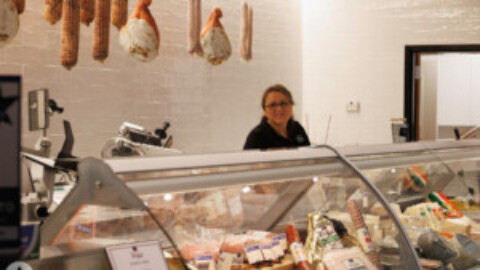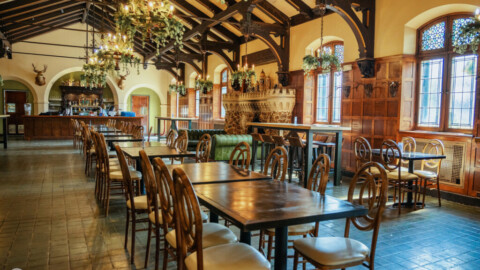photograph by Mandi Gray
A curious neighborhood with examples of some of the largest private homes in the city rubbing elbows with some of the city’s tallest apartment buildings. DeBaliviere Place is an architectural gem for St. Louis, that provides easy accessibility to Forest Park, Washington University, plenty of dining, and good public transportation options. Its western border is even site to a stretch of the controversial, proposed “Loop Trolley”.
photograph by Jason Gray
photograph by Theresa Harter
photograph by Susan Price
photograph by Ann Aurbach
In 1876, the city’s greatest single attraction, Forest Park, opened to the public. This addition redirected St. Louis’ physical growth pattern from north/south to west. The lavish new park drew substantial real estate development to its borders in part because the city’s movers and shakers desired the beautiful natural setting, and wanted easy access to it. Lucas Place and Lafayette Square, previous enclaves for the grand estates of the rich, were usurped by the private places and mansions of the Central West End, and later, DeBaliviere Place. With the focus of the city (and soon, the world) on Forest Park, it is no wonder that people desired to live nearby. In addition, the opening of the Eads Bridge in 1874 connected the growing western railroads to existing eastern terminals, and threw open a flood gate of rail traffic in a corridor that ran through DeBaliviere Place. In 1887, the newly formed, St. Louis Streetcar Company operated several lines that connected with Forest Park, including the Lindell line, which terminated at Lindell Pavilion (now the Forest Park Visitors Center, and a literal stones throw from the growing neighborhood). During the 1904 Louisiana Purchase Exposition in Forest Park, this station was most visitor’s entrance to the second largest World’s Fair in history.
photograph by Jason Gray
photograph by James Palmour
photograph by Mandi Gray
Beginning in the 1880’s, St. Louis experienced several decades of its largest increases in overall population. Fueled by a resurgence of immigration and a boom in manufacturing, the city grew from about 350,000 in 1880 to over 800,000 in 1930. During this same fifty year period, the DeBaliviere Place neighborhood experienced radical changes as well.
photograph by Theresa Harter
photograph by Jason Gray
photograph by Susan Price
From almost the very beginning, the neighborhood possessed an enviable stock of colossal mansions and exclusive private places (private streets that are independently governed and serviced by residents instead of the city). However, DeBaliviere Place was located in the right place at the right time for future growth, and so to these existing single-family homes were added many elegant, multi-story apartment complexes that still tower over the landscape. Then as now, this unique mix of exclusive homes and densely packed housing lends the neighborhood a diversity that few other city neighborhoods can match. In principle, this is a good thing, but in practice the extremes of this diversity (mostly economic, though racial too) rarely overlap. It is easy to observe this truth in the, what must be, miles of sturdy fencing that separates the haves from the have-nots. Though this practice of “compounding” is evidenced throughout all of the neighborhoods and municipalities east or west of DeBaliviere Place, it is troubling how many locked gates one encounters while trying to walk from one side of the neighborhood to the other. Sure there are thoroughfares in place, but try imagining a shortcut from south east to north west or from north east to south west through the neighborhood, and you will begin to understand the problem. This actuality keeps most of the neighborhood feeling relatively quiet and private, while directing most of the pedestrian traffic to the peripheries (and along Pershing). Nonetheless, the neighborhood does possess a plethora of vibrant businesses ranging from restaurants and retail to a highly rated college prep school. Based on this economic activity and the popularity of apartment living in DeBaliviere Place, there is little doubt that people enjoy residing here, so they must be willing to put up with being shut out (or at least willing to ignore it).
photograph by James Palmour
photograph by James Palmour
photograph by Jasmine B.
photograph by Jason Gray
Today, just as in the beginning of the neighborhood, DeBaliviere Place is a center of public transit in the city. For Metrolink riders, the DeBaliviere stop is a strategic hub for connecting lines. In addition, the proposed Loop Trolley project will connect the Missouri History Museum to the University City Loop, and will run straight down the length of this neighborhood’s western border. Though adding another form of public transportation to the mix may sound like a good idea, there is still plenty of controversy surrounding the plan, including everything from tree removal concerns to objection over increased foot traffic.
photograph by Chris Naffziger
photograph by Jasmine B.
photograph by Mandi Gray
photograph by Jason Gray
photograph by Ann Aurbach
Our endpoint for Photo Flood 27 was The Kitchen Sink. It is not often that I lack a variety of adjectives to explain my position on something, but I do not know how best to properly sum up how delicious this restaurant is. It has an eclectic menu with a strong emphasis on Cajun, so if you like either of those things, give it a shot (you will not be disappointed). We highly recommend the namesake meal (an inspired take on cheesy grits) and the Sweet Fries (sweet potato fries with marshmallow).
photograph by Jason Gray































